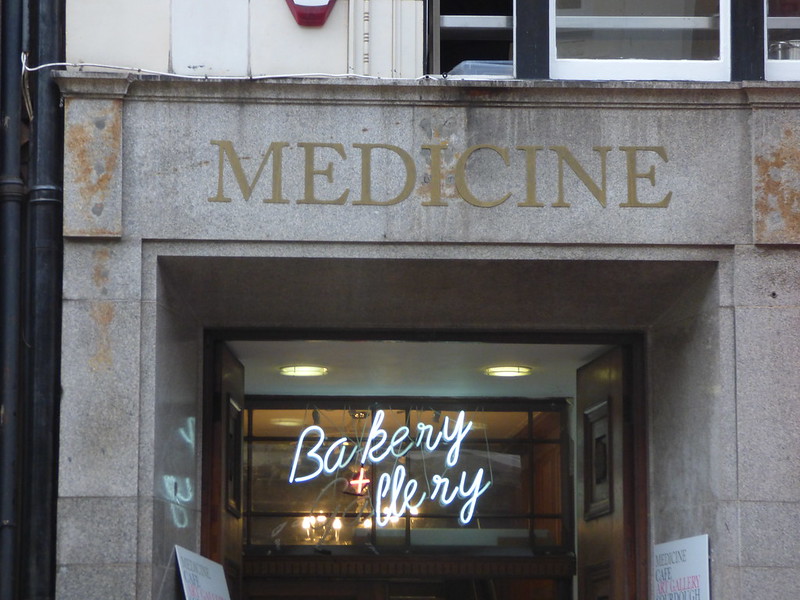
Culture Critic Orla Taylor-Davies reviews the Medicine Bakery + Gallery’s latest photograph exhibition which chronicles black culture and history in Britain
The misconception that the arrival of the Windrush Generation marked the beginning of a multi-ethnic Britain is a dangerous one. It implies the existence of a once ethnically undifferentiated Britain that never existed, and as a result, racist rhetoric has harked back to this imaginary period time and time again.
ABP’s photography exhibition, ‘The Missing Chapter: Black Chronicles’ showcases a selection of 19th century studio portraits of individuals of African, Caribbean and South Asian descent. As noted in the single information poster near the entrance of Medicine Bakery + Gallery, many of these photographs ‘lay buried deep within the archives for decades, unseen for more than 125 years’.
Ignored, dismissed, disavowed, only just being sought out, displayed and researched. This is the infuriating story of the majority of sources related to the presence of people of colour in British history. On the seesaw of which histories are prioritised, statues of celebrated slave owners and abolitionists alike were built in the 19th century, while evidence of black agency, liberation, struggle, triumph and joy were relegated to the dustiest corners of the archives.
‘The Missing Chapter: Black Chronicles’ goes far to refute the systematic silencing of people of colour’s experiences, and indeed, existence, in 19th century Britain via representation. A wide range of people, ‘visiting performers, politicians, dignitaries, servicemen… royalty and missionaries’ are included.
Many of the portrait sitters are upper class, wearing luxurious dress
Many of the portrait sitters are upper class, wearing luxurious dress, with drapery, painted foliage and ornate columns in the background, like Sarah Forbes Bonetta, Queen Victoria’s protegee, or Prince Alamayu, son of Emperor Tewodros II of modern-day Ethiopia. Individuals of lower status sit among simpler sets, often closer to the camera and caught at torso length. As is the case with 19th century studio photography, the sitters are upright, their gaze either eerily penetrating or cast away to the side.
Two photographs in particular stand out for their warmth and relative informality. Albert Jones and John Xiniwe, the youngest members of the African Choir, a group of performers from South Africa, appear to be about ten years old and are depicted in a landscape photograph. John stands behind a camera and is pictured physically directing his sitter, Albert, who sites opposite him.
Martha Ricks, a seventy-six-year-old ex-enslaved woman, smiles warmly, directly into the camera. ABP provides a small paragraph of information about each sitter, including their name as well as the photographer’s or the photography studio. According to this information, Martha ‘fulfilled her life-long dream’ when she travelled to England from Liberia to present Queen Victoria with a quilt of a blooming Liberian coffee tree, which took her twenty-five years to complete.
Martha fulfilled her life-long dream when she travelled to England from Liberia to present Queen Victoria with a quilt of a blooming Liberian coffee tree
As always with museum and gallery text, not much information is provided and what is, is selective. I found myself wanting to see the string of sources that informed this text, to see if the questions that weren’t addressed could be answered at all- did Martha explicitly state that gifting this quilt to Queen Victoria was her ‘lifelong dream’? Was she escorted from Liberia to London especially to see the Queen? Did she make her own way over? How was she received?
In some cases, exploitation seemed to lurk beneath the words that described the sitter and their story. This was especially true for a young boy named ‘Kalulu’ (Ndugu M’Hali). The ‘personal servant to explorer and journalist Sir Henry Morton Stanley’, he was named ‘Kalulu’ by Sir Stanley and ‘accompanied him’ around the world. Sir Stanley imposing a new name on his young black servant is reminiscent of the power relation between enslaver and enslaved; ‘exotic’ new names would often be imposed on enslaved people by their enslavers. Ndugu was born forty years after the slave trade was abolished by Britain, twenty years after slavery itself was ended, but practises such as this remained. Again, I felt compelled to question what circumstances led to Ndugu’s portrait- where was this young boy’s family? What were the conditions of his accompanying Sir Stanley round the world? Ultimately, what degree of agency did he have in his position as servant?
Both Martha Ricks and Ndugu M’Hali’s stories are recounted in more detail online, but they are ones that evoked unease while reading the snippet of information provided at Medicine Bakery + Gallery. However, discomfort is important when dealing with these histories. To sanitise these stories, to disavow any aspect of information that we might read and wonder about, would be to continue Britain’s tradition of silencing.
ABP’s ‘The Missing Chapter: Black Chronicles’ was a fascinating bringing together of visually beautiful photographs, that revealed the presence and experiences of people of colour in 19th century Britain. Lined across the walls of Medicine Bakery + Gallery, and therefore not necessarily viewed by audiences who sought out this exhibition, the likelihood is that these photographs displayed people of colour in a way that the majority of people had never before seen or considered.

Comments